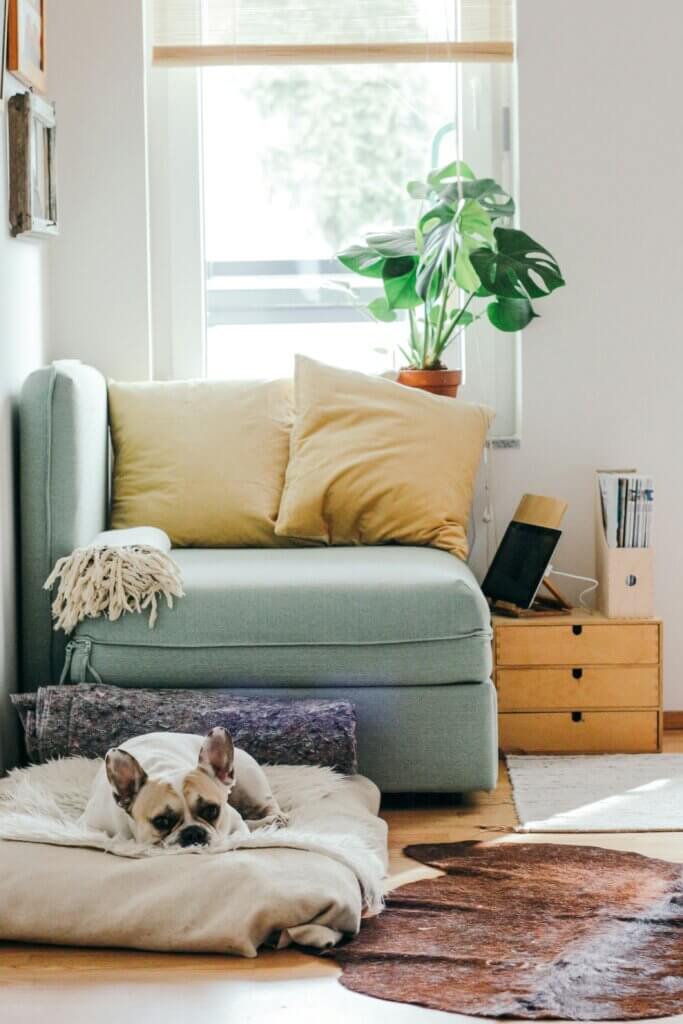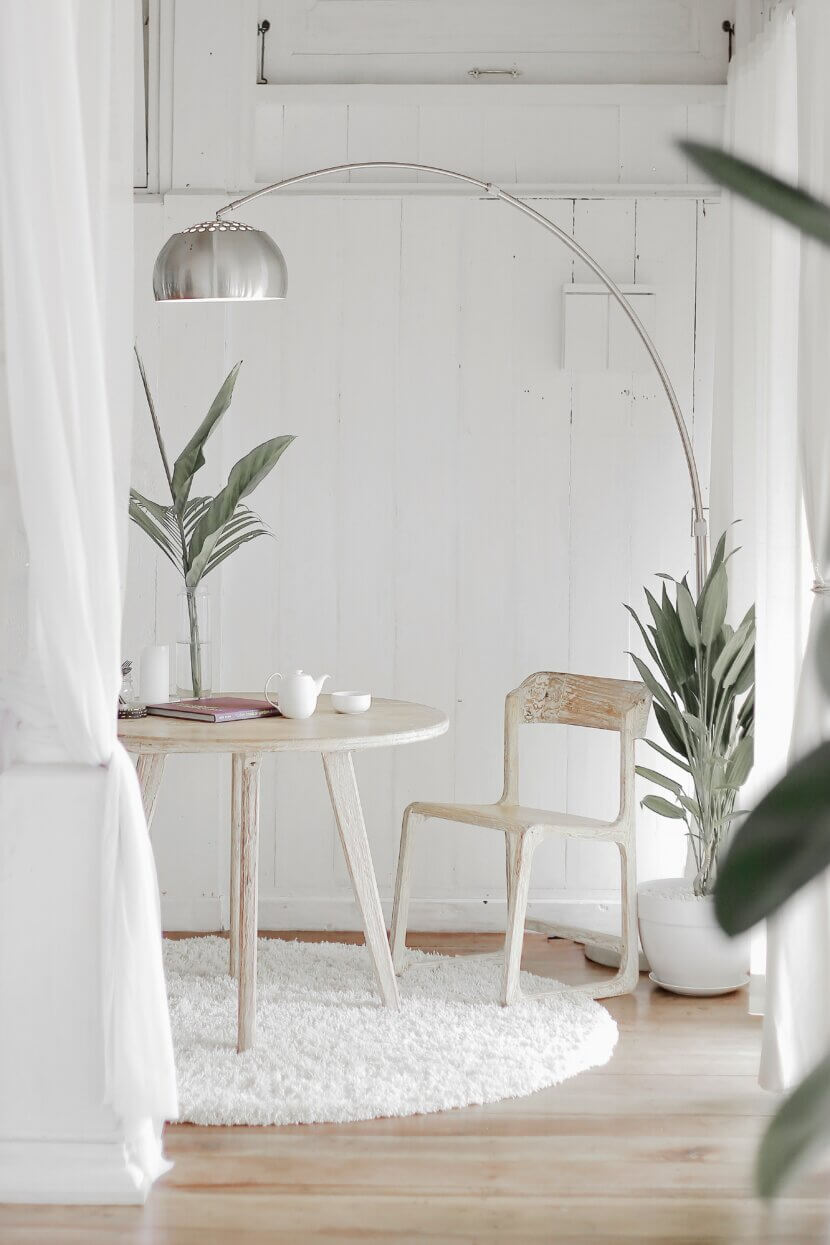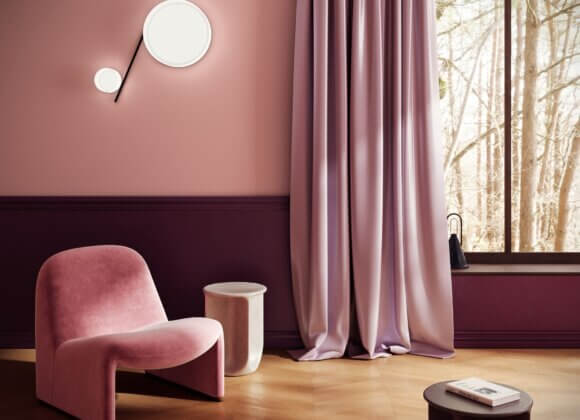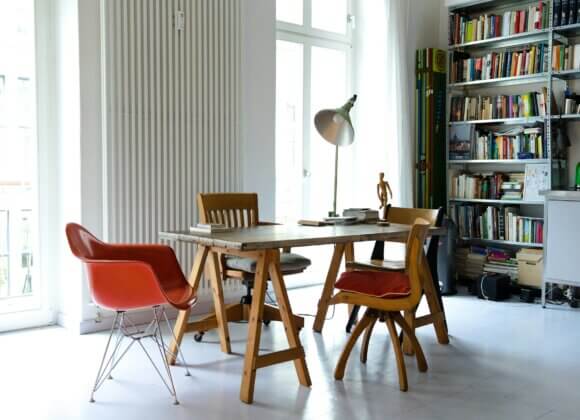The demand for sustainable furnishings is constantly growing, as more and more people want to make their living spaces not only beautiful, but also environmentally friendly. Interior designer Jacqueline Heneis explains what really matters when choosing environmentally friendly furniture.
Sustainable furniture is more than just a trend – it is an expression of a conscious lifestyle that combines aesthetics and responsibility. But what exactly makes furniture ecological and sustainable? And how can consumers ensure that they are using truly environmentally friendly upholstered furniture in their homes? Interior designer Jacqueline Heneis, founder of HEIMISH, explains how to furnish a home that is both stylish and eco-friendly.
It all starts with choosing the right materials. “It’s about having as little impact on the environment as possible, and sustainable and natural furniture and materials also create a very special living experience,” explains interior designer Jacqueline Heneis, who has been designing individual living concepts with her company HEIMISH for five years and places a lot of value on sustainability herself. When choosing furniture, she pays particular attention to “the function, quality and material of the furniture. The longevity and timelessness of the design play a major role, especially for large pieces and upholstered furniture such as a sofa, bed or closet.”
As an expert, her main advice is to distance yourself from quick and trendy purchasing decisions and instead opt for furniture that is timeless and will last for several generations.”

Biodegradable, recyclable or regenerative
For her living concepts, she likes to work with solid wood and natural textiles such as linen and cotton. “Solid wood has a natural warmth and a long lifespan, it ages beautifully and can be reworked several times. We breathe life into our rooms with textiles in different textures. The diverse properties of natural materials create a beautiful balance in every room.” Furniture made from either biodegradable, recyclable or renewable materials is particularly sustainable.
More and more furniture manufacturers are turning to materials that are both ecologically and aesthetically pleasing. “I’m currently seeing a trend towards recycled plastic from ocean waste and textile waste from the fashion industry,” explains Heneis. “Natural fibers such as jute and hemp are also on the rise again.” These materials are not only sustainable, but also give the furniture a unique character and a special feel.
Sustainable furnishings: how to recognize ecological furniture
Certain certifications are a good indicator of whether a piece of furniture has been produced ecologically or not. “The FSC seal for wood or the GOTS seal for textiles, for example, guarantee that the materials come from sustainable sources and have been produced under ecologically and socially responsible conditions,” explains the expert. “The origin of the furniture and the transparency of the manufacturing process are also important benchmarks.”
Second-hand furniture: sustainable furnishings with character
Second-hand furniture also offers an excellent opportunity to furnish sustainably. “They have the advantage that no new resources are required for their production and – if chosen well – they are often of high quality,” explains Heneis. “They also have a history, which gives them additional character.”
Second-hand furniture is often cheaper than new pieces of comparable quality and can appear almost new with small adjustments such as painting or staining solid wood furniture. “With a little creativity and courage, existing furniture can be wonderfully integrated into modern rooms. It’s all about creating a harmonious but interesting dialog between the different styles,” says the interior designer.

Local craftsmen: tradition and quality from the region
Heneis likes to work with local carpenters or craftspeople on her projects “to offer bespoke furniture that is functional and tailored to individual needs.” She also likes to integrate products from manufacturers who primarily work with solid wood, such as Flussdorf Möbel, Grüne Erde or Ton Bentwood Furniture. She also recommends focusing on regional handicrafts, such as individual wall clocks from Stoppmaker Objects. This keeps tradition alive, supports the local economy and contributes to diversity in the market. Choosing ecologically produced furniture means taking responsibility – for the environment, for future generations, but also for your own quality of life.
Five tips for sustainable furnishings:
- Go for durability: choose furniture that is timeless in design and robust in workmanship.
- Look out for certificates: FSC and GOTS seals guarantee that the materials come from sustainable sources.
- Use recycled materials: Recycled wood, glass and textiles conserve resources and are still of high quality.
- Combine old and new: second-hand furniture combines wonderfully with modern pieces and adds character to the room.
- Think local: work with local craftsmen to create individual, sustainable pieces of furniture.
Sustainable buildings
In the middle of Vienna: living and living naturally in solid timber construction













